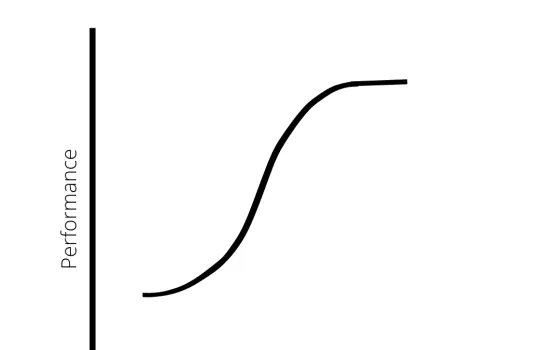Darwin's theory of evolution need not be limited to the world of organic beings but can be extended to the world of innovation, technology and business where disruption has been the new normal. The theory of natural selection proposes that those beings that are better equipped to survive, mature and reproduce i.e. adapt to their environment thrive and the rest weeded out. Similarly businesses that can adapt to the changing requirements of an ever-demanding, ever-evolving world that is heavily dependent on technology will thrive and the rest weeded out.
The Innovator's Dilemma (the book that deeply influenced Steve Jobs) emphasizes that disruption can be powerful. You can either disrupt an existing business to create market leadership or innovate and stay relevant to retain market leadership by seizing upon the next wave of disruptive innovation that sweeps industries. In the world of innovation and technology when to be or not to be grasps the innovators mind, it is always advisable to be, i.e. be the change. S-curve of technology is a model that tracks the product from its inception to retirement vis-a-vis the impact it has on industries where impact is measured by the value it generates in the market over time. Adapting this model and framework enables the business to foresee change and prepare for it instead of eventually failing despite having been profitable for a period of time. Business can make more informed strategic decisions that directly affect all stakeholders and help them retain their market leadership.
The S-curve of technology theory asserts that the magnitude of a technology's (or product’s) performance improvement in a given time period or for a fixed amount of engineering effort is likely to differ as technologies mature. In the early stages of a technology development, the rate of progress in performance is relatively slow. As the technology becomes better understood and controlled, the rate of technological improvement accelerates. But in its mature stages, the technology asymptotically approaches a natural or physical limit, such that further improvements require significant amounts of time and effort. At this stage it is wise to adapt to the newer, faster, sophisticated and more cost effective technology solutions that are prevalent in the market to prevent stagnation and stasis.
In this blog we argue that beyond the world of technology in the domain of enterprise work the theory of S-curves is equally relevant and prevalent. Disruption and adaptability are two essential realities in enterprise work. Thus S-curve model can be used to visualize and predict incremental and radical change and enable businesses to make data driven decisions
Enterprise work is the process of converting ingredients into artifacts of greater value where the ingredients consist of elements such as capital, material and information and artifacts constitute the likes of products and services. Most enterprise work, as is followed in the ITIL framework for delivering IT services, requires a blend of people, process and tools or technology. Its lifecycle can be divided into three distinct phases -
i. formative,
ii. maturing and,
iii. sustenance.
The first phase is often a gradual process. The purpose of the work is determined in the formative phase to arrive at the why of work. Work definition evolves in scope and is fleshed out. Clarity regarding work outputs and the work ingredients are sought to ensure high quality deliverables. At this stage the required skill set gets defined and the work process established gets mapped to skills required to put an organization structure in place. The work gets established at this stage.
The second phase is relatively faster as the focus is on increased productivity. Strategic, visible and tangible improvements are made. This routinely involves a combination of rationalization, optimization and transformation of work definition to reduce time and cost of work, while simultaneously improving work output quality. Various lean and agile methods such as performing time-and-motion studies of work systems are used to identify and operationalize scope for improvement. The work achieves maturity at this stage as processes are defined and the how of work, addressed.
The third phase involves sustenance, i.e. strategies to retain its mature position are implemented. Most enterprise work enters this phase once the time-cost-quality equation of work reaches an acceptable level, and the work process is standardized. The focus of the organization unit performing the work shifts towards scaling the work and making it more efficient. This is generally achieved by leveraging the popular divide-and-conquer strategy, to partition the end-to-end work process into several small standardized work stages, each of which can be performed by people with specialized (often commoditized) skill.
While this divide-and-conquer strategy, indeed, makes the process more efficient and scalable, it leads to several downstream challenges. Compartmentalizing work bars the processors from being aware of the extent and breadth of work performed. They have no visibility or understanding of the larger picture i.e. the end-to-end process. The how of work tends to take precedence over the why of work, often leading to a disconnect between the people, process and technology. Layering and information hiding also makes assessing the impact of any changes in any stage of work become difficult. This makes the work system rigid, and often leads to stagnation in work stakeholder value culminating in a plateau.
It is important to understand that an enterprise itself can be modelled as a network or as composition of inter-dependent work. The enterprise work network, in aggregate, produces artifacts that are the source of revenue for enterprises. Thus, the S-curves for individual work nodes collectively determine the S-curve for the enterprise. Stagnation of work (and consequently, of work networks) leads to erosion of business value and competitive market differentiation. A robust and agile enterprise work management system helps in addressing this state of stasis.
The purpose of enterprise work management is to identify when the point of inflection on the present work's S-curve has been passed, (namely, the second derivative of S-curve begins to dip and is negative), and to identify and develop novel ways of performing the work that will eventually replace the present process of work implementation. Hence, as depicted by the dotted curve, the challenge is to successfully switch work definitions and implementations at the point where S-curves of old and new intersect and to come up with innovative solutions. Inability to anticipate and to switch to new work definitions in a timely manner creates opportunities for new entrants to disrupt established enterprises and render them obsolete.
It is challenging to accurately identify that point of inflection when the process has obtained stagnation. When is the work reaching that stage where when the work completed and the output delivered begins to be considered as good, but not good enough? What is good enough? Are innovative and emerging technologies being factored in to increase process efficiency? This has to be carefully evaluated vis-a-vis the work that is being delivered in the market while anticipating the innovations that are going to disrupt the industry. Industry benchmarks are ever evolving as new ways of thinking replace the old. Thus it becomes pertinent for enterprise work management systems to not only track the progress of work but to evaluate it constantly, alerting the business stakeholders well in advance and helping the business embrace the change instead of fearing it. A successful business navigates the landscape of inevitable transformation in a way that provides the end-users with artifacts that are of high quality as per current definitions.
As cloud providers become more efficient and competitive, the cost of supporting an app on a server decreases as the tools, processes and technologies used become more available and advanced in nature. This trend emerges and becomes prevalent across industries. App supporters who do not factor this in will lose business and their market share if they remain aligned to ones that are not the best.
In the outsourcing industry, changing service providers and vendors is akin to jumping the S-curve. Say if a new provider can assure higher or same quality with a 35% reduction in cost at the moment and if a further year-on-year reduction can be envisaged, it would be prudent to not renew the contracts with the old.
For an organization to remain relevant and a market leader, it is critical to identify when to jump and how to jump boats and ride one that is not sinking being burdened with processes and tools that are of little or no value today. Are you aware of where you are currently on the S-curve of each line of work? Is your present enterprise work management system agile and robust enough? Are you confident that your business is prepared to seize the moment as the next wave of innovation sweeps across the industry?



















